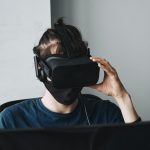Social skills are an important part of daily life, as they are the set of skills we use to communicate with other people. Social skills do not just include verbal interactions such as speech but also non-verbal such as facial expressions and body language. And, like every other skill, it is something that needs to be learnt, practiced and then perfected. Some people are not born with the ability to easily navigate these skills such as kids who are neurodiverse (refers to people who are autistic, or on the spectrum, or have developmental issues). VR technology is aiming to build social skills in an easier and less daunting way.
Why should we care about building social skills?
These skills are fundamental in our society, as individuals interact and communicate with each other daily. It is vital to know how to make and keep friendships, respond well when encountering conflict and to showcase a sense of empathy when interacting with people. These skills are important to build upon from childhood, as they are needed in all stages of life.
KidSense states that these are the aspects of social skills that are necessary to a person’s development:
What are the building blocks necessary to develop social skills?
- Attention and concentration: Sustained effort, doing activities without distraction and being able to hold that effort long enough to get the task done.
- Receptive (understanding) language: Comprehension of language.
- Expressive (using) language: The use of language through speech, sign or alternative forms of communication to communicate wants, needs, thoughts and ideas.
- Play skills: Voluntary engagement in self motivated activities that are normally associated with pleasure and enjoyment where the activities may be, but are not necessarily, goal oriented.
- Pre-language skills: The ways in which we communicate without using words and include things such as gestures, facial expressions, imitation, joint attention and eye-contact.
- Self regulation: The ability to obtain, maintain and change one’s emotion, behaviour, attention and activity level appropriate for a task or situation in a socially acceptable manner.
- Executive functioning: Higher order reasoning and thinking skills.
- Planning and sequencing: The sequential multi-step task or activity performance to achieve a well-defined result.
So Where Does VR fit into this?
While VR technology is not yet commonly used to aid neurodiverse children with building social skills, researchers (Ke, Moon and Sokolikj) utilised the program OpenSimulator to help seven children build their social skills. The results were overwhelmingly positive, Ke, Moon and Sokolikj recorded that “participants constantly expressed satisfaction with the VR-based social interaction activities during interviewing. Their parents reported increased voluntary engagement by the participants in daily social interactions post the intervention. Four participants requested and continued the VR-based social interaction activities even after the study was completed.”
The researchers utilised desktop VR as it was the most cost-effective and efficient manner to conduct the study. OpenSimulator, the program used for this study, functions with a computer generated 3D simulation of real-life scenarios, so that the kids can immerse themselves in the situations.
Why VR Is Helpful For NeuroDiverse Children:
- VR is the most helpful technology for kids who need to develop their social skills because they are able to comprehend and learn in a “nonthreatening, synthetic but realistic, motivating, controllable, and diversifiable environment during learning”, says Bellani.
- VR technologies are known to be able to represent the most realistic version of real life scenarios and social interactions, which enables the children involved to act in a real manner as well as to learn from their mistakes efficiently.
- The technology is especially helpful in finding the weaknesses that the child may have such as avoiding eye contact, because of the eye-tracking features and multi-sensory experience.
As a result of this study, VR technology can be further developed for children who have problems learning and developing social skills. The program can be further refined and utilised due to the collaborative nature of this study, enabling the participants to voice their opinions as well as reflecting upon the data recorded. VR technology is recognised to be a fully immersive experience which is imperative for kids who have trouble recognising and expressing social skills. Through the continued betterment of the program, to suit the needs of a wider range of children, VR technology will become necessary and vital to the improvement of social skills in kids around the world.
Written by Belinda Saha
Similar articles to check out:







